Scientific Instruments in Nashik
MILTON ENTERPRISES, Nashik 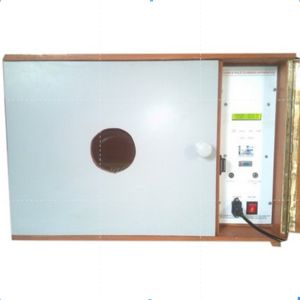 The Cook's Pole Climbing Test apparatus is used in behavioral pharmacology research to assess the cognitive and motor responses of rodents, typically rats and mice, to various stimuli.
This test is particularly useful for evaluating learning, memory, and the effects of neuroactive drugs, especially those with potential anxiolytic, antipsychotic, and antidepressant properties.
Here's how it is used and its significance:
Primary Uses of Cook's Pole Climbing Test Assessment of Learning and Memory:
Active Avoidance Learning: The Cook's Pole Climbing Test is designed to measure active avoidance learning. In this test, rodents learn to associate a conditioned stimulus (such as a light or tone) with an impending aversive stimulus (usually a mild electric shock delivered to the grid floor). To avoid the shock, the rodent must climb a pole positioned in the test chamber.
Training and Testing: During training sessions, the rodent learns to climb the pole upon presentation of the conditioned stimulus to avoid the shock. In subsequent testing sessions, the latency to climb the pole in response to the conditioned stimulus is measured to assess learning and memory retention.
Evaluation of Cognitive Enhancers and Impairments:
Cognitive Enhancers: The test is used to evaluate the efficacy of cognitive enhancers or nootropic drugs. Improved performance, indicated by reduced latency to climb the pole and increased avoidance responses, suggests enhanced cognitive function.
Cognitive Impairments: Conversely, the test can be used to model and study cognitive impairments induced by factors such as neurodegenerative diseases, aging, or drug treatments. Increased latency and decreased avoidance responses indicate cognitive deficits.
Pharmacological Testing:
Antipsychotic and Anxiolytic Drugs: The Cook's Pole Climbing Test is particularly valuable for testing the effects of antipsychotic and anxiolytic drugs. Antipsychotic drugs may enhance the learning process and decrease avoidance latency, reflecting their potential therapeutic effects.
Dose-Response Studies: Researchers use the test to conduct dose-response studies, determining the optimal dosage and efficacy of various pharmacological agents.
Studying Neurotransmitter Systems: The test helps in understanding the role of different neurotransmitter systems (e.g., dopaminergic, cholinergic) in learning and memory. By administering receptor-specific agonists or antagonists, researchers can investigate how these systems influence cognitive functions.
Behavioral Phenotyping: The Cook's Pole Climbing Test is used for behavioral phenotyping of genetically modified rodents. This helps in identifying the effects of specific genes on learning and memory, contributing to the understanding of genetic influences on cognitive functions.
Modeling Psychiatric and Neurological Disorders: The test is used to model psychiatric and neurological disorders such as schizophrenia, anxiety disorders, and Alzheimer's disease. Changes in avoidance behavior can provide insights into the pathophysiology of these conditions and the potential therapeutic effects of drugs.
Procedure Overview Apparatus Setup: The Cook's Pole Climbing Test apparatus consists of a chamber with a grid floor that can deliver mild electric shocks and a central pole that the rodent can climb. The rodent learns to climb the pole to avoid the shock.
Testing Sessions: In testing sessions, the conditioned stimulus is presented without the shock, and the rodent's latency to climb the pole is recorded. This measures the rodent's learning and memory of the avoidance response.
Data Analysis: The latency to climb the pole, number of successful avoidances, and other behaviors are analyzed to assess the cognitive and motor responses of the rodent. MILTON ENTERPRISES, Nashik 
- A Bedding Disposal Station is a specialized unit designed for the safe and efficient disposal of animal bedding in research and vivarium settings.
- It features a robust containment system with HEPA filtration to prevent the release of allergens and contaminants into the environment.
- The station typically includes a suction system to remove bedding from cages, directing waste into a sealed disposal container.
- It has ergonomic design elements such as height-adjustable components and foot pedals for hands-free operation.
- These stations improve hygiene, reduce airborne particles, and enhance the safety and efficiency of bedding disposal processes.
MILTON ENTERPRISES, Nashik 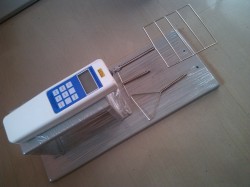 We manufacture Advanced grip strength meter for scientific study of muscles strength of small laboratory animals such as Rat and Mice, which having capacity up to 50 Newton, user can observer results in Kilograms (Kg), Pounds (lb) and Newton (N), User can change direction of Displayed Reading as it can be from front side and from back side, In addition to this user can freeze maximum reading by pressing Peak mode here user has to press zero to go for next reading. also user can go for Auto peak, by selecting Auto peak mode user will get highest peak results on display for the moment and after 3 seconds grip strength meter will be zero automatic, battery backup facility also provided with the grip strength meter by default, instrument can be directly to the printer also but laboratory Enterprises has provided special software utility for more study as user can view reading on computer screen with numerical and graphical form, also user can export data in micro-soft excel sheet. user can save that experiment re open. Quality Testing Unit, Warehouse, Packaging Unit and Logistics Unit. We have compartmentalized our infrastructure as per the functionalities to bring forth highly reliable and cost effective Pharmacology and Pharmaceutics. MILTON ENTERPRISES, Nashik 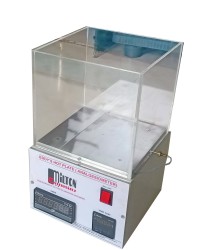 Milton Enterprises introduces Eddys hot plate (Analgesiometer) is used to study of analgesic property of pharmaceutical substance in pharmacy colleges, medical colleges, research institutes and pharmaceutical industries, especially in pharmacology departments, ME's
Analgesiometer having digital Timer, with 999.99 seconds resolution, & digital temperature controller having resolution 0.1˚C, with temperature range as ambient to 65˚C pedal switch needed to save readings, no holder has been change for rat and mice.
Key Features :
- Timer: Digital.
- Temperature controller & indicator: Digital.
- Temperature Range: Ambient to 65˚C.
- Temperature accuracy: ± 0.1˚C.
- Animal Chamber: Transparent, Easy to Clean.
- Pedal Switch: to freeze reading.
MILTON ENTERPRISES, Nashik  - The Zero Maze is a behavioral test used in neuroscience research to assess anxiety-like behavior in rodents, typically mice or rats.
- The apparatus consists of a circular track elevated above the floor, which is divided into four equal sections: two open and two enclosed with high walls.
- Rodents are placed on the maze, and their movements are observed and recorded.
- The time spent in the open versus the enclosed sections is measured, with more time in the open areas indicating lower anxiety levels.
- This test leverages the natural tendency of rodents to avoid open, exposed spaces, providing insights into their anxiety and fear responses.
MILTON ENTERPRISES, Nashik  An IVC (Individually Ventilated Cage) system with HEPA filters and pre-filters is a specialized housing unit used in laboratory animal facilities to maintain clean and controlled environments for research animals. Here's a concise overview:
IVC System: Individually Ventilated Cages are designed to house one or a small group of animals per cage, providing isolated microenvironments for each animal.
HEPA Filters: High-Efficiency Particulate Air (HEPA) filters are integrated into the IVC system to ensure that incoming and outgoing air is free from contaminants, such as allergens, pathogens, and particulate matter. HEPA filters are crucial for maintaining biosecurity within the facility and preventing cross-contamination between cages.
Pre-filters: Pre-filters are installed upstream of the HEPA filters to capture larger particles and debris, thereby extending the lifespan and efficiency of the HEPA filters. They help to protect the HEPA filters from premature clogging and ensure optimal airflow and filtration performance.
IVC systems with HEPA filters and pre-filters are essential in biomedical and pharmaceutical research settings where maintaining specific environmental conditions and animal health are critical. They support animal welfare by providing a clean and comfortable living space while minimizing the risk of disease transmission and ensuring the integrity of research outcomes. MILTON ENTERPRISES, Nashik 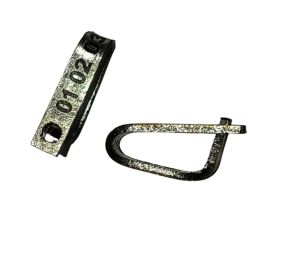 Stainless Steel 316L offers excepti> The tags are designed with the well-being of small animals in mind, featuring smooth edges and a lightweight c> The tags are easy to attach and secure, making the process quick and stress-free for both the animals and the handlers.
Each tag is uniquely identifiable, allowing for precise tracking and management of laboratory animals, which is crucial for research accuracy.
We also offer customized numbering to meet specific user requirements, ensuring that each tag perfectly fits the unique needs of your research.Our Animal
dentity Tag System provides an indispensable tool for researchers, combining practicality with animal welfare. Choose our tags for a dependable and humane solution to animal identification. MILTON ENTERPRISES, Nashik 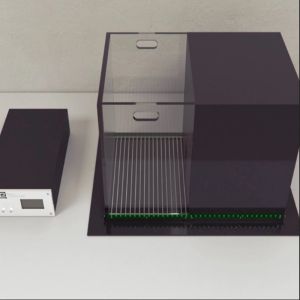 The Light and Dark Test, also known as the Light-Dark Box Test, is a behavioral assay used in pharmaceutical research to assess anxiety-like behaviors in rodents, specifically rats and mice. Here is how it is used and its significance in research: Assessment of Anxiety: The primary purpose of the Light and Dark Test is to evaluate anxiety-like behaviors in rodents. The test is based on the natural aversion of rodents to brightly lit areas and their preference for dark, enclosed spaces. This preference is linked to their instinct to avoid potential predators and open spaces. Test Setup: The apparatus typically consists of a box divided into two compartments: one brightly lit (light compartment) and the other dark (dark compartment). The light compartment is usually open and illuminated with bright light, while the dark compartment is enclosed and covered, providing a shaded area. Behavioral Measures: During the test, a rodent is placed in the middle of the apparatus, and its behavior is observed and recorded. Key behavioral measures include: Latency to Enter the Dark Compartment: The time taken for the rodent to enter the dark compartment from the light compartment. Time Spent in Each Compartment: The amount of time the rodent spends in the light compartment versus the dark compartment. Number of Transitions: The number of times the rodent moves between the light and dark compartments. Anxiolytic and Anxiogenic Drug Testing: The Light and Dark Test is commonly used to evaluate the effects of anxiolytic (anxiety-reducing) and anxiogenic (anxiety-inducing) compounds. Anxiolytic drugs typically increase the time spent in the light compartment and the number of transitions between compartments, indicating reduced anxiety. Conversely, anxiogenic substances reduce the time spent in the light compartment and the number of transitions. Studying Genetic and Environmental Factors: Researchers use the Light and Dark Test to study the impact of genetic modifications, environmental factors, and stress on anxiety-like behaviors. Comparing the behavior of genetically modified rodents with wild-type controls, or assessing the effects of environmental stressors, can provide insights into the biological and environmental determinants of anxiety. Behavioral Phenotyping: The test is part of a broader battery of behavioral assays used for phenotyping rodent models. It provides valuable data on anxiety-related behaviors, contributing to a comprehensive understanding of the behavioral phenotype of different strains or genetically engineered models. Mechanistic Studies: The Light and Dark Test can be used in combination with pharmacological interventions to investigate the underlying mechanisms of anxiety. By examining the effects of drugs that target specific neurotransmitter systems (e.g., serotonin, GABA), researchers can gain insights into the neurobiological pathways involved in anxiety. Validation of Animal Models: The test is used to validate animal models of anxiety disorders. By demonstrating that certain genetic, pharmacological, or environmental manipulations lead to anxiety-like behaviors in the Light and Dark Test, researchers can establish the relevance of these models for studying human anxiety conditions. MILTON ENTERPRISES, Nashik 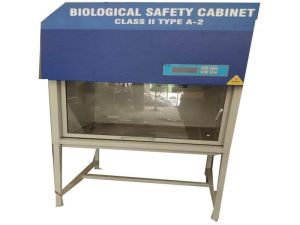 A Biosafety Cabinet (BSC) is a vital piece of laboratory equipment designed to provide a safe working environment when handling infectious materials or creating a sterile workspace. Hereâ??s a succinct overview:
- **Purpose**: BSCs are used to protect personnel, research materials, and the environment from exposure to hazardous biological agents or pathogens.
- **Applications**: They are essential in laboratories conducting microbiological research, clinical diagnostics, and pharmaceutical production involving biohazardous materials.
- **Features**: BSCs typically feature HEPA filtration to create a sterile environment, airflow systems that prevent contaminants from escaping, and protective measures like UV lights for decontamination.
- **Types**: BSCs are classified into different biosafety levels (BSL-1, BSL-2, BSL-3) depending on the level of risk associated with the biological agents being handled.
- **Importance**: Ensures compliance with biosafety regulations, protects laboratory personnel from exposure, and maintains the integrity of experiments and research outcomes.
In summary, Biosafety Cabinets are critical tools in laboratories where handling biological hazards safely and preventing contamination are paramount. MILTON ENTERPRISES, Nashik 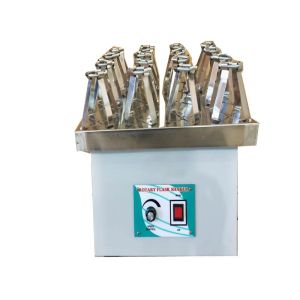 A Rotary Flask Shaker is a laboratory instrument designed for mixing and agitation of liquid samples in glassware, typically flasks, using orbital or reciprocal motion. Here's a concise overview:
- **Purpose**: Used for various applications including culturing, mixing, and extraction processes in biological, chemical, and pharmaceutical laboratories.
- **Features**: Equipped with adjustable speed controls, timers, and sometimes temperature controls to optimize mixing conditions for different types of samples.
- **Types**: Available in different sizes and capacities to accommodate various flask sizes and sample volumes.
- **Applications**: Widely used in microbiology for bacterial and yeast culture growth, in chemistry for chemical reactions requiring agitation, and in pharmaceutical labs for drug formulation and testing.
- **Importance**: Essential for achieving uniform mixing and efficient oxygen transfer in liquid cultures, which is crucial for maintaining cell viability and maximizing yields in biotechnological processes.
In summary, Rotary Flask Shakers are indispensable tools in laboratory settings where precise agitation and mixing of liquid samples in flasks are required for research, development, and production purposes. MILTON ENTERPRISES, Nashik 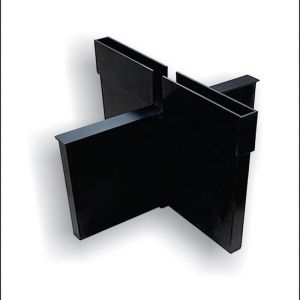 The Elevated Plus Maze (EPM) is a widely used behavioral test in pharmacology and neuroscience research to assess anxiety-related behaviors in rodents, typically mice or rats. Here's how it is used and its significance: Assessment of Anxiety: The primary use of the EPM is to evaluate anxiety levels in rodents. The maze consists of two open arms and two closed arms, elevated above the ground. Rodents naturally prefer enclosed spaces and avoid open, elevated areas due to fear of falling and exposure. Thus, the time spent in the open arms versus the closed arms serves as an indicator of anxiety levels. Testing Anxiolytic and Anxiogenic Compounds: The EPM is used to screen the effects of pharmacological agents on anxiety. Anxiolytic (anxiety-reducing) drugs typically increase the time rodents spend in the open arms, indicating reduced anxiety. Conversely, anxiogenic (anxiety-inducing) substances reduce the time spent in open arms. Behavioral Profiling: The EPM helps in profiling the behavioral effects of various compounds. Researchers can observe changes in exploratory behavior, risk assessment, and overall activity levels, which provide insights into the drug's impact on anxiety and related behaviors. Mechanistic Studies: By using the EPM in conjunction with pharmacological manipulations (e.g., using receptor antagonists or agonists), researchers can investigate the underlying mechanisms of anxiety and the role of specific neurotransmitter systems, such as serotonin, GABA, and glutamate. Genetic Research: The EPM is used to study the genetic basis of anxiety by comparing the behavior of different rodent strains or genetically modified animals. This can help identify genetic factors that influence anxiety and contribute to our understanding of anxiety disorders. Longitudinal Studies: Researchers use the EPM to conduct longitudinal studies on the effects of chronic drug treatment, stress, or developmental changes on anxiety. This helps in understanding how these factors influence anxiety over time. Validation of Animal Models: The EPM is an essential tool for validating animal models of anxiety disorders. By showing that certain genetic, environmental, or pharmacological manipulations lead to anxiety-like behaviors in the EPM, researchers can establish the relevance of these models to human anxiety conditions. Behavioral Phenotyping: The EPM is part of a battery of behavioral tests used for phenotyping rodent models, particularly in studies investigating the impact of neurological or psychiatric conditions. It provides valuable data on how these conditions affect anxiety-related MILTON ENTERPRISES, Nashik 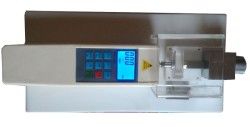 Laboratory Enterprises manufacture and supply advanced Tablet Hardness Tester for the use to many pharmaceutical colleges, medical colleges and advanced research institutes. The level of hardness can be displayed in three different units which can be chosen according to the needs. There is a backup power facility to keep the device running in the case of power failure. Automatic peak point calculation has been enabled to find breaking point of tablet automatically.
Laboratory enterprises introduces advanced tablet hardness tester, which having three kind of unit to display result as per select by user as Kg / Ib / N, battery backup facility provided to avoid interruption in experiment due to electricity failure, without peak and auto peak facility has provided to get break point of tablet automatically, dual sided screen resolution provided to comfort to see from front end and back end to user, in addition to all these features Laboratory enterprises provides PC connectivity but it is optional by this facility user can configure Tablet Hardness Tester instrument MILTON ENTERPRISES, Nashik 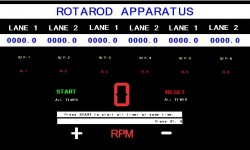 MILTON ENTERPRISES introduces Rotarod Apparatus is used to screen effect
of drug on motor co-ordination in small laboratory rodent, rotarod
consist of five separate compartments, each compartment having separate
reset push button, in addition to Reset all one button for reset all
frozen timer, Start button to start rotation of central rod, below of
floor lip switch has given, when the rodent fall down on the floor flap
lip switch touches each other & time in 9999.9 sec. RPM of moving rod
will display onscreen it will increase or decrease by up side arrow
& downside arrow will freeze on the graphical display for
each compartment, also we provide software utility which is optional MILTON ENTERPRISES, Nashik 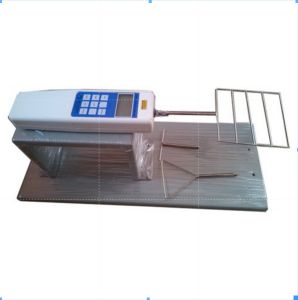 MILTON ENTERPRISES Introduces Advanced Digital Grip Strength Meter to Measure grip Strength of fore limbs & hind limbs of Rat & Mice to Observe effects of Drugs, Toxic Agents, Muscle Relaxants Disease,Digital Grip Strength Meter to Measure grip Strength of fore limbs & hind limbs of Rat & Mice to Observe effects of Drugs, Toxic Agents, Muscle Relaxants Disease Ageing Factor Neural Damages on Muscle Strength.MILTON ENTERPRISES provides DIGITAL GRIP STRENGTH METER along with T- shape, mesh & Trianle shape attachments which is made by stainless steel 304. In addition to battery back up acility miltom enterprises provides software utility to store data & retrive it when ever its required for examine. MILTON ENTERPRISES, Nashik 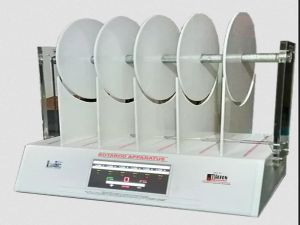 The animal is placed on the rotating lane of the Rota Rod and
the timer is started. When the animal drops safely into its
own lane, the time latency to fall (minutes and seconds) and
rotation speed are automatically recorded. A removable upper
separator for rat models is included to prevent interference
between animals running in adjacent lanes.
The Rota Rod is controlled by an advanced microprocessor
which provides precise timing control and ultra-accurate
speed regulation. Rotation can be electronically set at a
constant speed (4-40 rpm). Alternatively, acceleration rate
may be selected at a defined time (30 sec to 10 min, 1 sec
increments). Acquired data is saved in table form by
lanes/trials.
Now even easier to use! The new touchscreen graphic user
interface allows clear visualization of timing and speed for
each lane. Change modes, adjust speed, and create protocols
right from the main screen for greater flexibility with
maximum functionality and usability.
close
Post Your Requirement
{{inquiryMessage}}
|